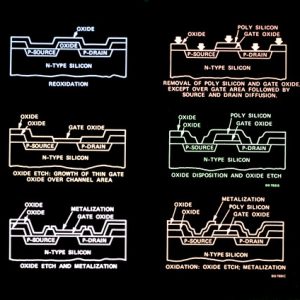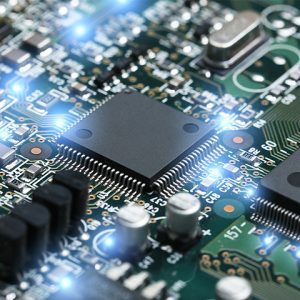
Fiber Optic Connectors and Ferrules
The ferrule provides physical support for the fiber and maintains precise alignment to ensure light transmission. It is extremely sensitive to tolerances in hole diameter and concentricity, as mismatched holes can cause loss of data or power.
Ilsintech produces precision zirconia ceramic ferrules for ST (straight tip) connectors, LC connectors and other form factors. Read on to learn more about these critical components and how they affect performance.
Optical Performance
The primary function of a ferrule is to provide physical support and precise alignment of mating optical fibers for optimal transmission of light signals. Its exact dimensions and smooth surface finish play an equally important role in reducing signal loss due to reflection or scattering. Singlemode ferrules must have the tightest tolerances on the bore diameter (dictated by the small core size of a single mode optical fiber), while multimode ferrules can be more forgiving.
The ceramic (and to some extent metal) ferrule is the most critical part of a fiber optic connector, and it’s essential that it has the correct tolerances to ensure optimal performance. This includes the bore or inner diameter, flange material and concentricity.
A non-circular bore or a mismatched inner/outer diameter can result in lateral or end misalignment between the receive and transmit ferrules, which prevents some of the light from the transmitted fiber’s cladding from entering the received fiber’s cladding at the endface. This causes a reduction in power transmission and may lead to loss of signal strength.
A ferrule’s concentricity is the degree to which it has a perfectly round shape, allowing it to hold the optic fiber precisely aligned with its endface. This is the most important factor for achieving low Insertion Loss. Ideally, the bore and flange should be machined to achieve a very high level of concentricity.
Material
The ferrule is the component that holds the fiber core inside of a fiber-optic connector. The material used for a ferrule impacts the performance of your network. It can impact everything from insertion loss to end separation. Using the best ferrule materials will ensure high-quality connections for your network.
The most important factor for a good ferrule is its ability to make a strong physical contact with the optical fiber. A good fit will result in minimal fiber-optic-connectors-ferrule insertion loss and low back-reflection. The end face of the ferrule must also be precision polished to achieve an optimal optical surface.
While the ferrule is a common feature across all fiber optic connector types, each type has its own way of mating the two portions of the connector together. Some types use a bayonet design, while others screw or snap together. Some even have a keyed slot that helps align the ferrules for connection.
For optimal performance, a ferrule should be made of a hardened material like ceramic. It should also be designed with a tight tolerance for both the bore opening and the core. A loose bore opening will cause lateral mismatch, which can increase connector loss. Similarly, an irregular shape in the bore opening will lead to a lack of concentricity, which also increases loss.
End Face
A ferrule is a small cylindrical component that plays an essential role in the optical performance of a fiber-optic connector. It’s essentially a sleeve, or barrel, that holds the end of the optical fiber in place during the mating process, preventing excessive bending and stress that could cause backreflection and loss. The inner diameter of the ferrule is precisely designed to match the outer diameter of the optical fiber for a snug fit that ensures precise alignment.
Zirconia ceramics and composite plastic polymers are the most commonly used materials for ferrules in modern fiber-optic connectors. Both offer high precision and durability. During manufacturing, a grinding and polishing procedure is performed to produce a smooth surface that minimizes Connector Loss and provides optimal performance.
The end of the optical fiber is inserted into the ferrule and then epoxy-cement is applied for long-term strength and protection from contaminants. The end of the optical fiber is then trimmed and polished to match the surface of the ferrule for a tight tolerance fit.
Most fiber-optic connectors use a bayonet mount and a long cylindrical 2.5 mm ferrule to hold the ends of the optical fibers. ST connectors are the most popular type for multimode networks, and they have a spring-loaded mechanism to secure the ferrule. FC (also called MU) connectors resemble miniature SCs, and they are widely used in Japan and the Far East. LC connectors, on the other hand, look like an RJ45 push-pull snap-lock, and they offer higher density for panel or transceiver applications.
Manufacturing
The most critical component of a fiber optic connector is the ferrule. It is a ceramic, plastic or stainless steel part that holds the end of the optical fiber and precisely aligns it to the socket. If the length, hole Fiber Optic assembly companies centering and inside and outside diameters of the ferrule are not exactly right, a poor connection results.
The ferrule hole must be large enough to fit the cladding of the optical fiber (125um after its plastic coating has been stripped), yet tight enough that it does not allow the cladding to slip in and out as the connector is screwed or bayoneted onto the adapter. The hole also must be polished to a precise radius for maximum transmission efficiency and minimum loss.
Once the ferrule is produced, a laser or mechanical tool is used to trim off the excess material and polish it to a smooth, defect-free finish. This process is incredibly critical and requires a high level of expertise. It can take up to four hours to produce a single, perfect fiber-optic connector ferrule.
Several factors can impact the performance of a connector, including air gap between cable ends, which can lead to insertion loss and polarization extinction ratio degradation. These microscopic variances may seem unimportant, but they can significantly affect the performance of your connection. To minimize the effects of these issues, a connection method called PC (Physical Contact) was developed. This eliminates the air gap and reduces reflection by orienting the end of the optical fiber to face the correct direction in the ferrule.



